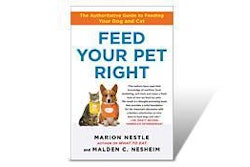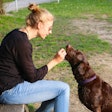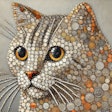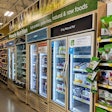In January I was privileged to attend Global Pets Forum, an annual conference organized by Pets International magazine. This year’s event was in Barcelona, Spain, and drew about 200 pet industry professionals, mainly from Europe but also from all other continents.
The conference included several interesting sessions on innovations, trends and sustainability, with highlights such as:
- Hanni Rutzler of Zukunftsinstitut in Germany and the Future Food Studio in Austria outlining trends in food and health;
- Frans Kampers, PhD, of Wageningen University and Research Centre in the Netherlands discussing potential applications of nanotechnology for pets; and
- Carla Ogeia Lewis of Mintel presenting food and drink trends with implications for petfood.
Rutzler called her predictions “trend fields” that could also play out in petfood over the next 10 to 15 years:
1. Face nature —nature is no longer to be conquered but rather discovered, Rutzler said. Pets, of course, have an intrinsic link to nature that we should use in marketing.
2. Real digital —this includes knowledge for and from the masses, leading to the democratization of nutritional information, with consumers becoming “co-producers,” and easier traceability of foods and ingredients. App marketing is a natural way to add creativity and fun to food brands.
3. We world —Rutzler shared an astonishing statistic: Anywhere from 40% to 70% of people in European and other cities live alone. Yet they want to stay connected to other people and often do so around food, participating in activities like tours, crowdsourcing, taste testing and cause marketing. These all lend themselves to pets (think animal welfare campaigns and events).
4. Nouveau terroir —an extension of the “buy local” trend that seemingly started in the US after the many recalls (of both petfoods and human foods) and has grown into regional marketing campaigns now starting to take hold in Europe. The overall goal is sustainable food production.
5. Soft health —a movement away from medical treatment toward a daily, holistic self-competence based on nutrition and wellness. Accordingly, Rutzler says, food consumption habits have evolved from product based to strict consumption to health and, in the future, will move toward sense. So, producers (food and petfood) need to make it easier for consumers to make sensible choices.
Dr. Kampers addressed two potential applications of nanotechnology for petfood: health-based foods and safety. This technology allows for functional ingredients or other nutrients to be encapsulated in nanostructures, helping increase bioavailability and mask the taste of the additives while avoiding problems such as interference with other ingredients and destruction or weakening of the nutrients during processing. Dr. Kampers said virtually all large human food companies are doing research in this area now.
From a safety angle, nanotechnology has the potential to create ways to check the freshness of food products, possibly with a simple handheld device that manufacturers, retailers or consumers could use to detect bacteria or pinpoint the exact freshness or quality level of the product. Nanotechnology can also help increase the barrier properties of packaging to preserve freshness.
Of the many trends and data points presented by Lewis of Mintel, I found this the most interesting: “No additives” showed up as a label claim in nearly 30% of new petfood products launched globally in 2010 (an increase from 2009) vs. only 15% of new human food products (flat compared to 2009). Perhaps that’s just further proof of petfood trends following those in human foods.
Lewis’ colleague, Lynn Dornblaser, director of CPG trend insight for Mintel, will be presenting new petfood product trends at Petfood Forum 2011.



















